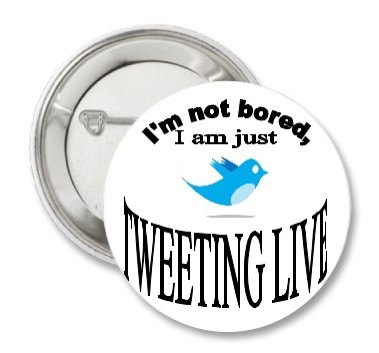This guide looks at how to live tweet a rally, protest or event.
As much as twitter is a tool to create a following in your cause, the following guide specifically looks at live tweeting for activist. It explores
What is live tweeting?
Why is it important?
How to tweet on the go?
Tips for effective tweeting
Live what?
Live tweeting is the act of updating your twitter with specific and focused information for any amount of time. The focus for the purpose of this guide is something happening where you are, although with many occupations being live streamed someone could easily live tweet the stream. Your focus could be a rally, a protest, or an event.
Why bother?
Live tweeting increases followers, gives intimate details and informs fellow activists. This is especially important if things don’t go as planned. For example, if there is an unexpected police presence at your protest, live tweets can keep other activists up to date on the situation, if people are being arrested or if they are being asked to leave and why. Responses can immediately help the situation at hand.
Many members of the media will also look to twitter for unfolding stories. When you’re live tweeting you can give an accurate report of what is happening on the ground and dispel rumours.
Mobile tweeting
There are several ways to live tweet. If you’re tweeting from a laptop you might want to search free downloadable programs like Tweetdeck that integrate multiple social media platforms. For smart phones there are a host of free twitter apps to choose from. If you don’t want to download apps, you can even link twitter to your phone for free through SMS.
Tips
Always let organizers know that you are live tweeting the event. This allows them to tell the crowd if certain parts of the event or details should not be tweeted (for example, a personal experience of a speaker).
Start with a hashtag (#) for your event, rally or protest. The hashtag is how users on twitter search for your live tweets, so it should be logical. It also allows others to respond, comment and participate in a larger conversation on the same subject indicated by the hashtag.
Retweet what other people are tweeting about the event, under the same hashtag or at you.
Be careful about @replies. If you begin a tweet with a @reply it won’t show up to your followers unless they follow the person you’re tweeting at. If you want all your followers to see the exchange, place your @reply in the middle of your tweet.
Don’t tweet every detail. It’s important to take the most important point of what’s being said or going on and summarize it clearly. It’s good to be specific about what’s going on but don’t get dragged down in description.
Add insight, comments and reflection in what you tweet to give context.
Incorporate pictures and videos as much as possible. Links may be distracting to your followers, who are interested in how the event you’re tweeting is unfolding.
Don’t worry about tweeting too much. As long as the information is relevant and interesting, there are no hard and fast rules. You don’t need to tweet every minute, but you should be tweeting more than once an hour.




